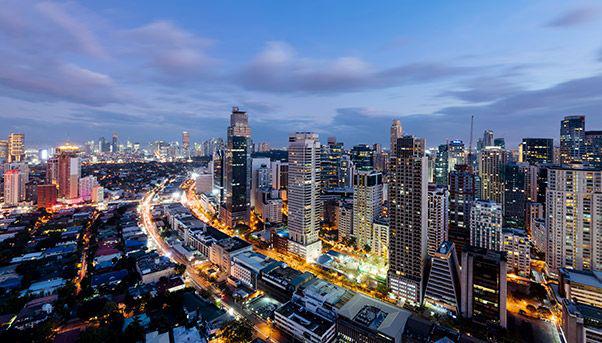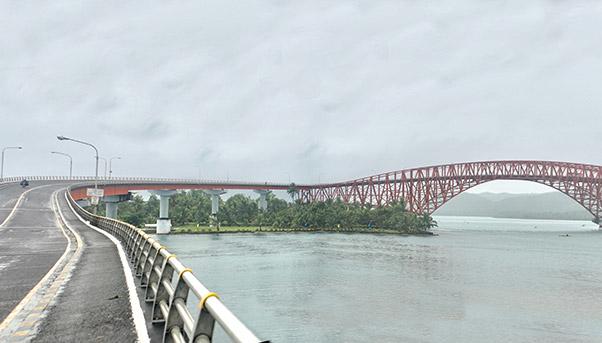
“Build, build, build.” The name for Philippines President Rodrigo Duterte’s economic policy says it all. Duterte’s plan calls for investments in infrastructure projects – be they large or small, more or less strategic, innovative or traditional: the goal is to transform what until a few years ago was called “the sick man of Asia” into an energetic and modern country. The Duterte government’s strategic view envisions infrastructure as not just an end (to build modern facilities for the country), but also as a means (pumping money into the national economy to foster work and growth).
The sums involved are huge. President Duterte announced in 2018 that a total of $180 billion will be spent over the next 10 years. This long-term plan will make an economic impact as soon as this year, perhaps even turning 2019 into a record year for GDP growth.
According to the Department of Budget and Management, investments in infrastructure should reach 6.9% of GDP in the next eleven months, turning the Philippines into one of the countries with the highest infrastructure spending-to-GDP ratios in the world.
Projects that will change the country
This transformation is visible to the naked eye to anyone travelling through the Philippines. Building sites are everywhere, from the capital Manila to the country’s largest cities. The government has identified 75 flagship projects to be launched in the coming years. For transport alone, leading this list are 6 airports, 9 railway lines, 3 bus rapid transit lines, and 32 roads and bridges. Energy and water are also high on the list. Four new energy production facilities will be built, thereby reducing the cost of supply, and 10 water management systems in cities will improve health and hygiene.
Record investments in infrastructure
The Department of Budget and Management (DBM) released economic data in January that was a snapshot of a booming economy. For 2018, the DBM said infrastructure investments reached 6.2% of GDP, slightly lower than the 6.3% reached in the record year of 2017.
President Duterte and his government have stepped on the accelerator: from 1986 to 2016, according to a press release from Budget Secretary Benjamin Diokno – the government was spending an average of 2% of GDP annually on infrastructure. That is three times lower than the numbers for 2017 and 2018.
This spending has already had an important impact on the country’s economy. The World Bank recorded a GDP growth of 6.7% in 2018, confirming the same forecast for 2019, making the Philippines the fastest-growing economy in South East Asia. China – once again – has stepped up to support a country’s modernization efforts. Last November, Chinese President Xi Jinping visited the Philippines and announced a $3.5 billion loan to build a 600-kilometer-long railway line linking Manila to Matnog. The project, which should favor regional transport, is just one of many in which China is ready to play its part, supporting Duterte’s policy.

San Juanico Bridge, Samar
Infrastructure: overcoming poverty by eliminating a delay
Despite the great progress made in recent years, the Philippines is still split in two. On the one hand is a new middle class that is benefiting from the government’s spending policies; on the other is a large part of the working class still living in poverty. The average per capita GDP in the Philippines is below $ 3,000 per year, according to the World Economic Forum. Hence the urgency of investing in infrastructure, seen as an important tool to create jobs and bring wealth. After all, the Philippines still lags behind in infrastructure compared to many of its neighbors. The 2018 Global Competitiveness Index of the World Economic Forum ranks the Philippines in 92nd place in the world for the quality of its infrastructure. A study by the Japan International Cooperation Agency has calculated that Manila’s traffic congestion cost the city $45 million each day in 2012, and the cost is expected to triple by 2030.
Manila, a city striving for modernity
Getting around in Manila has always been a nightmare. Commuting to work means spending an average of three hours a day in the car or on public transport, which the capital is the starting point for the government’s infrastructure renewal plans. Manila’s top priority project is the Metro Manila Subway Line 9, also known as the Mega Manila Subway, due to its size. The metro line will run for 25 kilometers between Quenzon City in the north and Taguig City in the south, also connecting the Ninoy Aquino International Airport. The project, which is expected to cost $ 4.5 billion, was finally approved last September and the work, which began this year, should end in 2025, with the first three stations ready in 2022.
In addition to the impact on the city transport system, the project also has a symbolic value, because it is the country’s first subway line. A second one was announced at the end of 2018, to be built in the city of Makati and financed through a private public partnership between private real estate development group Infradev Holdings Inc. and the local administration of Makati City. The $ 3.7 billion project is yet another major brick of the Duterte government’s “build, build, build” policy.

